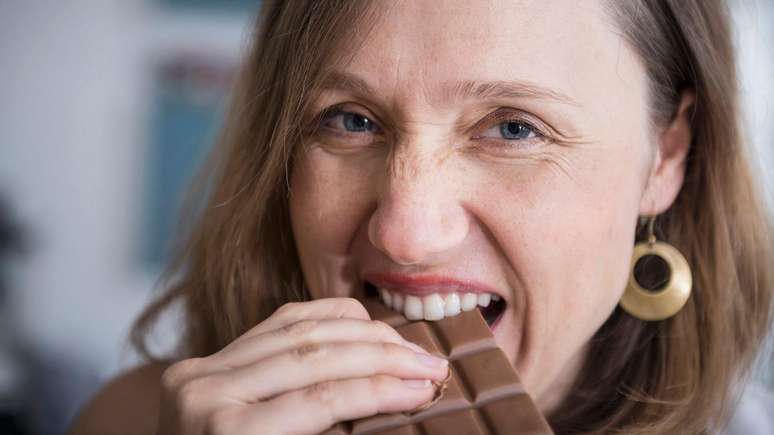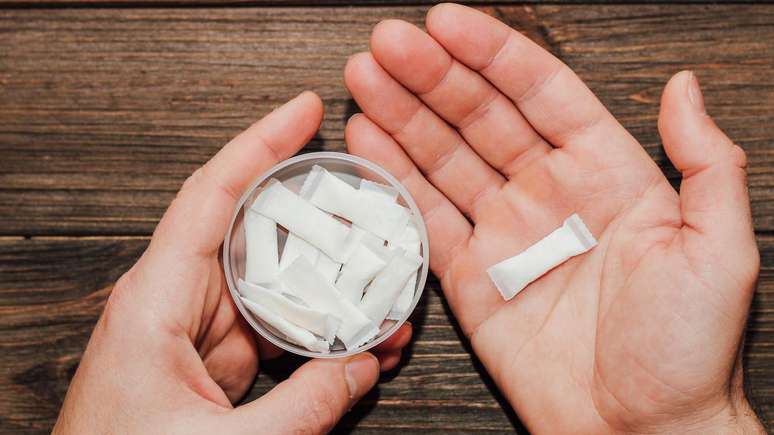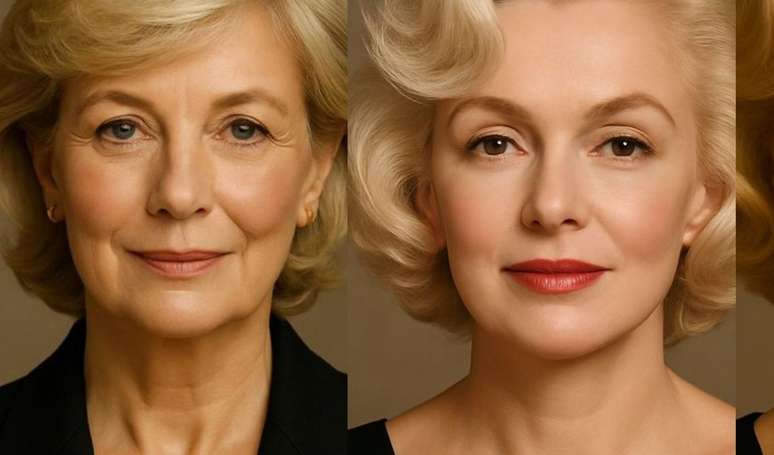Digital influencers have promoted products for young people who want to improve performance in gyms and studies
An increasing number of students in the United States is using caffeine sachets to obtain an extra dose of energy, a fashion that has worried experts.
The small sachets, positioned between the lips and gums, release a rapid dose of caffeine directly to the bloodstream.
Some digital influencers have promoted products on social networks, recommending use for those who want to improve performance when training or for students who want to be alert for tests.
Tiktok Shop sells more brands and flavors, who can be attractive for young people, according to Rob Van Dam, professor at George Washington University in the United States.
But since a single sachet can contain a lot of caffeine of two cups of coffee, it is easy to exaggerate and suffer unwanted side effects.
In addition, caffeine sachets are often discreet, you cannot understand that someone has one in the mouth, which makes it easier for parents and teachers to hide them.
On the internet, some fans of the product boast of being “excited” after using two sachets at a time to obtain a large dose of caffeine. Since the substance is quickly absorbed, the effects can start minutes after ingestion and last for several hours.
The levels can go out of control, warn Van Dam.
“Young people can be less tolerant of caffeine and there are the possibility to end up in an emergency room if they take too much.”
Why does caffeine and what happens if it consumes too much?
Caffeine is a stimulant that can make you feel more vigilant and less sleepy due to the effect it has under the brain and the nervous system.
Lewis James, professor at the School of Sport, Health Exercises and Sciences of the University of Loughborough, in the United Kingdom, says that there is evidence that caffeine can help make the exercise easier.
Therefore, it has become one of the most commonly used supplements regularly used among athletes.
While you train, your body produces a chemical called Adenosine, which makes you feel tired. Caffeine blocks adenosine receptors in the nerves and the brain perceives less pain and fatigue.
But it also acts on other parts of the body, even in the cardiovascular system, which can be a risk.
High levels of caffeine can cause heartbeats, arrhythmias and accelerated convulsions. Although rare, there are recordings of deaths caused by excess caffeine.

Some people, however, are more sensitive to caffeine than others and can experience nausea, anxiety, irritability and have a headache even with lower doses.
In general, the recommended consumption for most healthy adults is up to 400 mg of caffeine a day, which is equivalent to about four cups of instant coffee.
Since tea contains a little less, five cups a day are generally acceptable.
In the case of pregnant women, it is advisable to reduce the daily intake to 200 go less. Children and adolescents are also more sensitive to the risks and the overdose potential.
This is the reason why energy drinks containing more than 150 mg of caffeine, for example, are required by law in the European Union to bring labels with the warning: “high caffeine content. Not recommended for children, pregnant women or breast breastfeeding”.
Other drinks and foods containing caffeine
According to Professor Van Dam, it can be easy to exaggerate with the dose. Caffeine is present in many drinks and some foods, so it is important to check the quantity you are consuming.
“Although it is more difficult to have an overdose of coffee, with these products this is easier, especially if young people consume energy drinks.”
He says that some products, if analyzed in the laboratory, contain more caffeine than reported on the label.
- Coffee: A cup contains about 100-140 mg of caffeine;
- Tea: A cup contains about 75 mg;
- Energy drinks: Usually a 250 ml can contain 80 mg of caffeine;
- Soda: Usually a can contain about 40 mg;
- Chocolate: About 25 mg of caffeine in a 50 -ge dark chocolate bar about 10 mg in a milk chocolate bar.

Dentists warn that prolonged caffeine consumption can irritate the rubber, as well as the use of nicotine sachets, which has generated concern in the United Kingdom.
Some experts fear that caffeine sachets may be a gateway for the use of these substances.
According to Bini Sury, who operates at the Cleveland Clinic in London, and is a spokesman for the British Dietary Association (BDA), caffeine capsules may seem like a “fashion” or something harmless, but there is a real risk of normalizing the use of stimulants in teenagers and young people, potentially creating dependence models.
“Although caffeine can give a dose of temporary energy, it can disturb sleep and worsen fatigue over time, especially in children and adolescents, which are more sensitive to its effects.”
Recommended doses
If young people consume caffeine, BDA and NHS (British Health System) recommend caution.
The European Food Safety Authority suggests 3 mg per kilo of body weight as a maximum limit for children and teenagers, which means that a 30 kg child should not consume more than 90 mg per day.
Instead of resorting to caffeine, Suresh says that it is much better to focus on regular meals, hydration and foods rich in nutrients that maintain stable energy levels during the day.
A healthy diet with iron, proteins and slow carbohydrates should be enough, she says.
Source: Terra
Ben Stock is a lifestyle journalist and author at Gossipify. He writes about topics such as health, wellness, travel, food and home decor. He provides practical advice and inspiration to improve well-being, keeps readers up to date with latest lifestyle news and trends, known for his engaging writing style, in-depth analysis and unique perspectives.








![Such a wonderful sun in advance: Summary of the episode on Tuesday, August 12 [SPOILERS] Such a wonderful sun in advance: Summary of the episode on Tuesday, August 12 [SPOILERS]](https://fr.web.img3.acsta.net/img/8d/96/8d9627fc84d0ab5d33162b65dbbae176.jpg)
